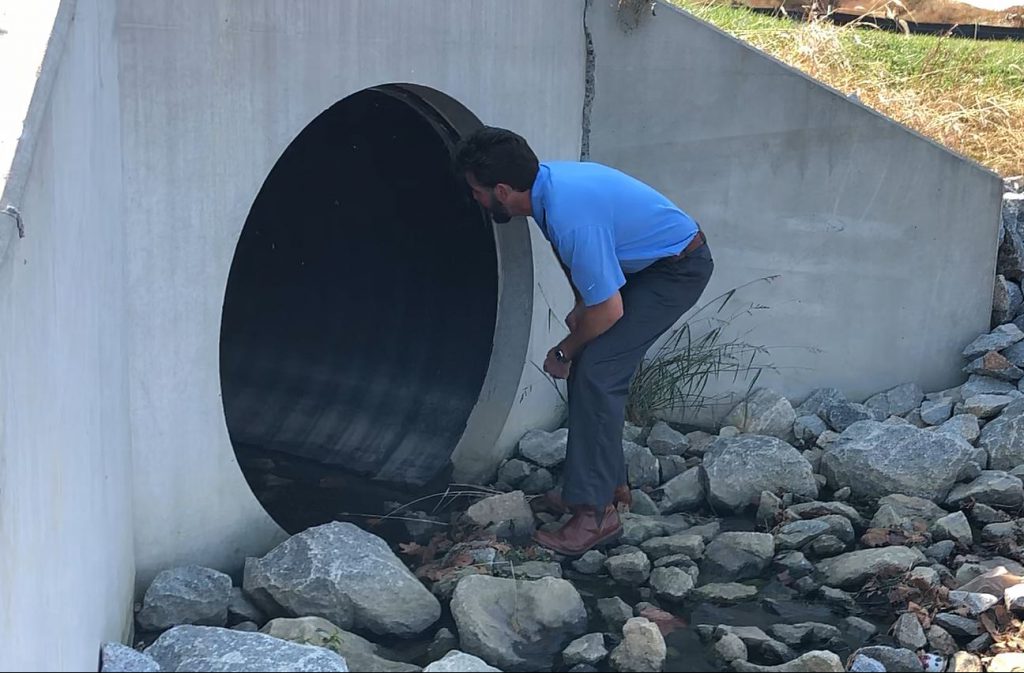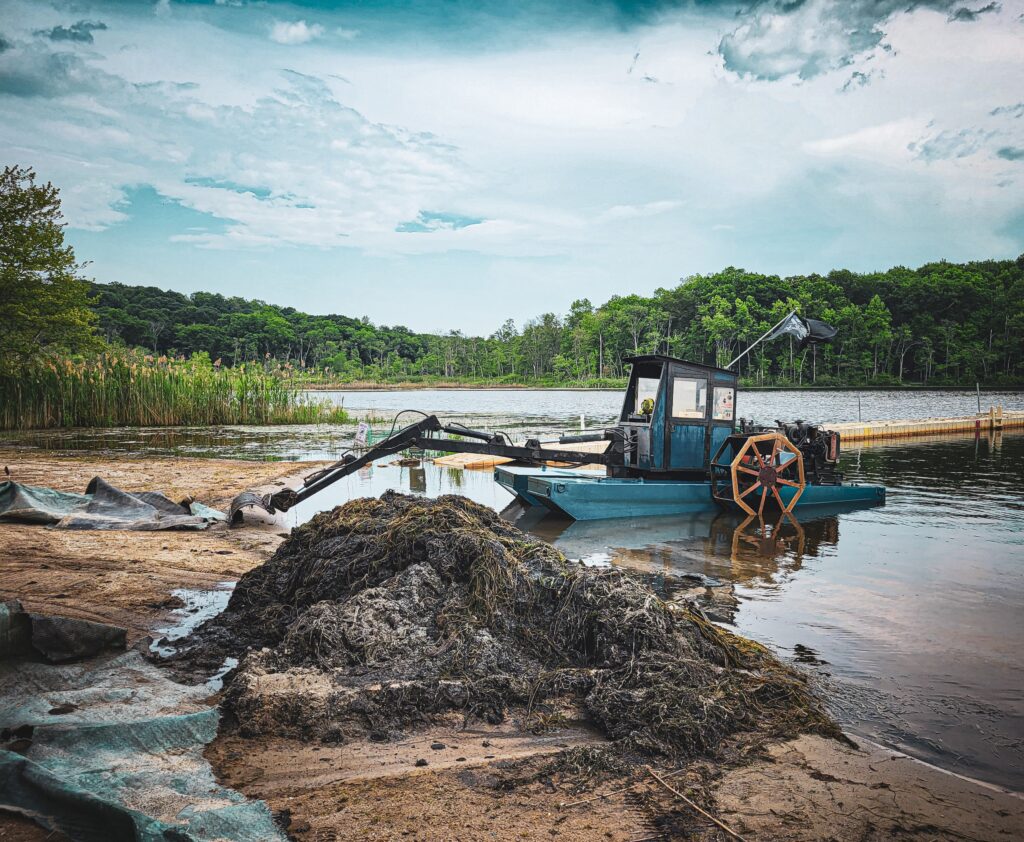
Top 5 Rules For Lake & Pond Management
AS SEEN IN Parks and Rec Business publication.
Whether you’ve recently stepped into a new role as a community manager or parks manager, or simply decided to turn more attention to the aesthetic needs of your facilities, there’s a good chance your responsibilities include overseeing a lake or stormwater pond. Maintaining a fully interactive aquatic ecosystem that is aesthetically pleasing, functional, and safe for the community can be daunting! Some choose to take this on “in-house” (either to cut down on costs or because they enjoy the challenge it brings) but it’s important to recognize possible complications and dangers that make professional intervention necessary.
There’s no true “how-to” guide for the management of freshwater resources; each waterbody and the management challenges that come with it are completely unique. However, all lakes and ponds can benefit from proactive, sustainable management efforts. Here are some rules of thumb that every facilities manager can benefit from keeping in mind…
1. Identify and Maintain Lake and Pond Structures
Lakes and stormwater ponds are valued focal points in our parks and communities, but improperly-working structures can pose incredible dangers for children and adults alike. This is why most stormwater management facilities are required to comply with the legislation set forth through the National Pollutant Discharge Elimination System. Get to know the waterbodies under your care by regularly walking around the perimeter and taking note of the dimensions, surface acreage, existing features, and their current condition.
If you identify any cracked or broken pipes, grates or structures it’s important to address these issues with the assistance of a professional lake manager who has the knowledge and access to advanced equipment, electrical services, and premium solutions. Likewise, arranging annual inspections by a professional can help ensure equipment is properly maintained and avoid steep fines and potential lawsuits associated with non-compliance.
2. Assess and Introduce Vegetation
In addition to structures, it’s important to regularly assess vegetation around your pond shoreline. Native flowering plants and grasses are excellent buffer plants that help filter runoff and pollutants, deter geese and reduce erosion. Consider introducing common species like pickerelweed, cardinal flower, blue-flag iris, or other native plants and allow them to grow, unmowed, 3-5 ft from the shoreline. In addition to being a fun activity to host with community members, it could also serve as an opportunity to educate children about environmental preservation and protection.
Alternatively, if the shoreline areas around the pond are overrun by trees, woody bushes, or invasive vegetation, it can de-stabilize the shoreline, threaten the balance of the ecosystem and lead to stormwater in compliance. In the event that undesirable plant or tree growth is identified, it’s important to bring in a professional lake manager to devise a solution that is customized to the specific needs of the property. Solutions may include physical species removal or the use of EPA-registered herbicides to selectively target undesirable growth without impacting native plant life. They may also recommend implementing a bioengineered living shoreline system or other long-lasting stabilization technologies.
3. Monitor and Enhance Water Quality
Take a look at the water itself, noting the color, clarity, and odors. Undesirable characteristics can indicate that your lake or pond is suffering from imbalanced water quality. Without proper intervention, imbalanced conditions can lead to the development of nuisance algae blooms, including those that create toxins that are known to kill pets and wildlife and endanger human health. Community and park managers can take steps to maintain the health and aesthetics of water resources by limiting the organic pollution that contributes to these imbalances. Installing trash cans and dog waste stations will help facilitate proper disposal. Collecting yard waste and reducing the use of lawn fertilizers, which contain nutrients that fuel algae, can also make a significant impact on the health of nearby waterbodies.
Ultimately, regular water quality testing by a licensed professional is often the most effective way to predict and proactively address dangerous water quality issues before they become a serious community health problem. Likewise, investments in sustainable proactive tools like fountains and aeration, nutrient remediation, beneficial bacteria applications, and dissolved oxygen treatments using new nanobubble technologies can significantly outweigh the steep costs and downtime associated with frequent reactive management options.
4. Implement Advanced Tools for Long-Lasting Beauty
Many small lake and pond maintenance tasks can be completed effectively without the hands-on assistance of a professional, but an avid do-it-yourselfer should also stay keen on the signs that professional intervention is necessary—especially below the water’s surface. For instance, stubborn water quality issues, eroded shorelines, and recurring flooding often indicate that a pond has lost valuable depth through sedimentation. Over time, dirt, debris, and pollutants are swept into the waterbody during weather events, causing a reduction in total volume. Eventually, costly dredging may become the only option available to restore the waterbody to its original condition.
Luckily, these common sedimentation problems can be caught early during annual assessments or with additional tools like bathymetric mapping, a process through which lake management professionals plot and model the unique contours of the pond’s bottom. When mapping data indicate that sediment build-up has become too great, a mechanical hydro-rake can be deployed to spot treat as needed. A hydro-rake is a floating barge equipped with attachments that can scoop hundreds of pounds of muck and debris out of the waterbody. Hydro-raking can help remove years of buildup and increase the longevity of the lake or pond.
5. Lean On the Knowledge of Professionals
Like the rest of a community or park manager’s responsibilities, it’s important to understand the unique characteristics, challenges, and benefits of lake or stormwater pond systems. Contributing to the management of these systems can be a challenging yet rewarding experience. Many educational materials exist to help illustrate the ways in which we can protect the health and beauty of our community waterbodies.
But when the responsibility becomes too great or the challenges become too advanced, it’s important to bring in a professional who can correctly identify areas of concern and devise safe and effective solutions. Your community members, the surrounding wildlife, and your budget will thank you.














